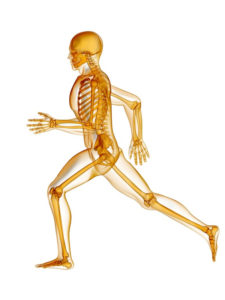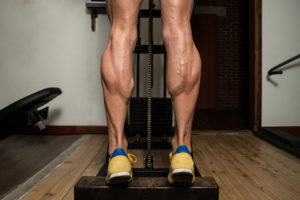Biomechanics
The term biomechanics refers to the movement of our body, generally during sport and exercise. It is composed of several elements that must function in a coordinated effort to move our bodies in an efficient manner. When these components are not in balance, injury can occur. So, what are the elements of biomechanics?
 Anatomy and Alignment
Anatomy and Alignment
The physical structure and alignment of our body’s tissues govern its capacity to move. These structures include bones, joints, ligaments, muscles, tendons, fascia, nerves, blood vessels, and even our fat. The physical make-up of each tissue right down to the cellular and molecular level effect the body’s movement patterns. For example, when a tendon becomes inflamed (tendonitis), pain receptors are stimulated and our body will instinctively limit movement in that part of the body, thus affecting our biomechanics. In some cases the alignment of our bones creates atypical stress on other tissues and thus a potential for injury. Improving the anatomy through rehabilitation, rest, or sometimes surgery will ensure we have the proper structures to perform our desired movements.
 Strength
Strength
Muscles are designed to primarily move and stabilize the body. They are composed of individual filaments that contract in response to nerve signals. How hard a muscle contracts is governed by the quantity and type of muscle fibers. Some fibers are better at quick movements (fast-twitch) while others possess greater endurance (slow-twitch). Endurance athletes, such as runners, typically possess a greater proportion of the slow-twitch fibers in comparison to a weight lifter or sprinter. Muscle function is affected by various factors such as training, vascular supply, prior injury, and genetics. Inadequate muscle strength can change our movements and even alter the alignment of our body (see anatomy above).
 Flexibility
Flexibility
While strength is a function of muscle shortening, flexibility is a function of muscle lengthening. Both are equally important for proper movement and form. For any given movement, some muscles will contract while others will relax and lengthen. Flexibility is governed by the physical composition of muscle tissue, tendon, and fascia (the outside layer on a muscle). The latter two structures do not stretch, but muscle tissue possesses that capacity and can even increase its capacity to stretch over time. Reduced flexibility will restrict movement of joints and affect our alignment.


